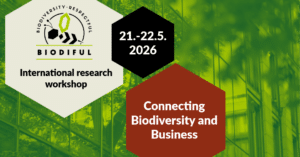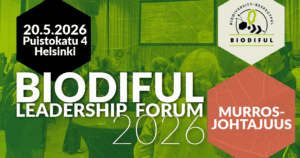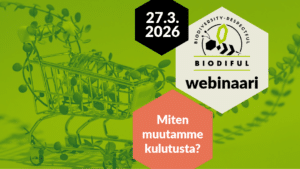Savallampi, J., Järviö, N. & Uusitalo, V. (2025) Evaluating global species loss from coffee production in agroforestry and conventional systems using life cycle assessment (LCA). International Journal of Life Cycle Assessment. https://doi.org/10.1007/s11367-025-02527-7
Abstract
Purpose: Food systems are the largest single contributor to the current biodiversity crisis, and coffee has been recognised as having high biodiversity impacts. Agroforestry is an alternative coffee production system that may have lower impacts on biodiversity than conventional monoculture coffee production. In this study, we compared the biodiversity impacts of agroforestry and conventional coffee production using life cycle assessment (LCA).
Methods: For this purpose, LCA models for coffee from a conventional production system and agroforestry system in Cauca Valley montane forests ecoregion of Colombia were built based on the literature data. Their biodiversity impacts were calculated as a global potentially disappeared fraction of species (PDF) per year using 1 kg of parchment coffee as the functional unit. We applied the Global Guidance for Life Cycle Assessment (GLAM) method to calculate the land occupation impacts in coffee cultivation stage, and LC-IMPACT was used for all other impacts. Sensitivity analyses were conducted for key uncertainties in the present study.
Results and discussion: The biodiversity impacts of conventional coffee production were 1.15E-12 PDF•y kg−1 on terrestrial ecosystems (TE), 2.18E-14 PDF•y kg−1 on freshwater ecosystems (FE) and 4.85E-17 PDF•y kg−1 on marine ecosystems (ME). The biodiversity impacts of coffee agroforestry on TE, FE and ME were 6.66E-13 PDF•y kg−1 (42% smaller), 1.42E-14 PDF•y kg−1 (35% smaller) and 3.30E-17 PDF•y kg−1 (32% smaller), respectively. Agroforestry coffee had smaller impacts in every impact category. However, our sensitivity analyses show that different assumptions can affect the size of biodiversity impacts although no changes in conclusion were found. Nonetheless, our results are based on one coffee-producing area, and large fluctuations, e.g. considering yields, could affect the results and conclusions for different regions and agroforestry coffee production overall.
Conclusions and recommendations: This study shows that existing life cycle impact assessment (LCIA) methods can differentiate between conventional production and agroforestry in terms of land use intensity levels and in impacts related to agricultural inputs, such as fertilisers. However, these comparisons would benefit from more detailed agroforestry-specific land stress characterisation factors. We also recommend the inclusion of land transformation impacts of the coffee cultivation stage in future calculations and the case-specific allocation of agroforestry coffee impacts to multiple products from the agroforestry system to better consider the multifunctionality of agroforestry. Lastly, we recommend future research to compare conventional and agroforestry coffee produced in several other regions to assess whether agroforestry coffee has generally lower biodiversity impacts compared to conventional coffee.
Reseachers
Further information and interviews: Jasmine Savallampi, Natasha Järviö, Ville Uusitalo
Junior Researcher Jasmine Savallampi, Sustainability Science, LUT School of Energy Systems, Lahti (Jasmine.Savallampi@lut.fi). In the BIODIDUL research project, Jasmine works in work package 6 Biodiversity impact measures.
Post-doctoral researcher Natasha Järviö, Sustainability Science, LUT School of Energy Systems, Lahti (Natasha.Jarvio@lut.fi). In the BIODIDUL research project, Natasha works in work package 6 Biodiversity impact measures.
Professor Ville Uusitalo, Sustainability Science, LUT School of Energy Systems, Lahti (ville.uusitalo@lut.fi). In the BIODIDUL research project, Ville coordinates work package 4 Biodiversity impact measures.


